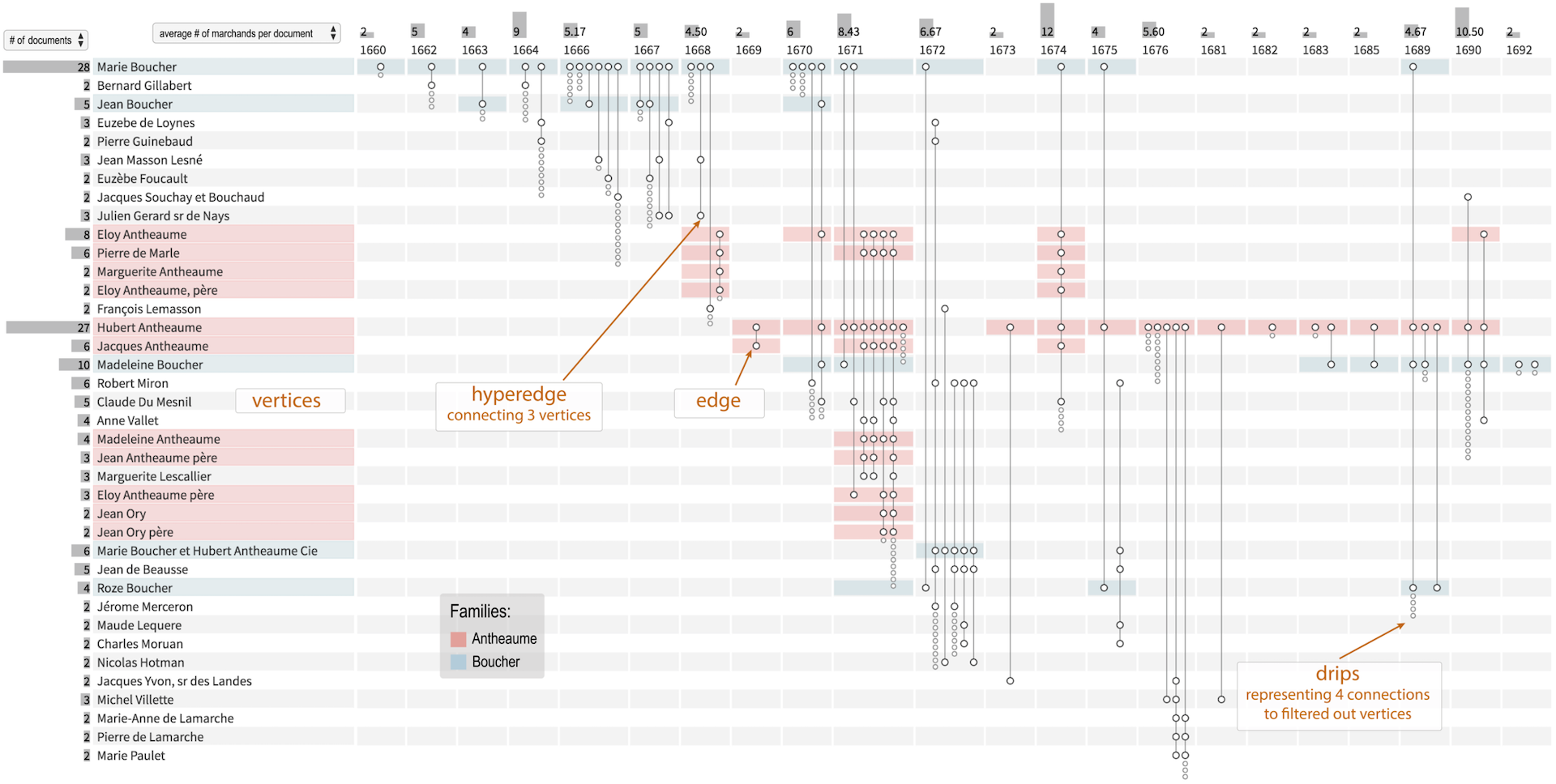Analyzing Dynamic Hypergraphs with Parallel Aggregated Ordered Hypergraph Visualization
Paola Valdivia, Paolo Buono, Catherine Plaisant, Nicole Dufournaud, Jean-Daniel Fekete
External link (DOI)
View presentation:2020-10-28T19:00:00ZGMT-0600Change your timezone on the schedule page
2020-10-28T19:00:00Z

Fast forward
Direct link to video on YouTube: https://youtu.be/OvvZxaoKVzU
Keywords
dynamic graph, interaction, case study, dynamic hypergraph, digital humanities, usability
Abstract
Parallel Aggregated Ordered Hypergraph (PAOH) is a novel technique to visualize dynamic hypergraphs. Hypergraphs are a generalization of graphs where edges can connect several vertices. Hypergraphs can be used to model networks of business partners or co-authorship networks with multiple authors per article. A dynamic hypergraph evolves over discrete time slots. PAOH represents vertices as parallel horizontal bars and hyperedges as vertical lines, using dots to depict the connections to one or more vertices. We describe a prototype implementation of Parallel Aggregated Ordered Hypergraph, report on a usability study with 9 participants analyzing publication data, and summarize the improvements made. Two case studies and several examples are provided. We believe that PAOH is the first technique to provide a highly readable representation of dynamic hypergraphs. It is easy to learn and well suited for medium size dynamic hypergraphs (50-500 vertices) such as those commonly generated by digital humanities projects—our driving application domain.